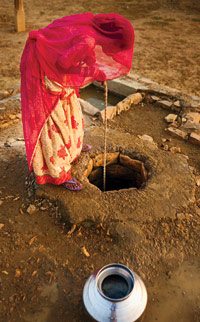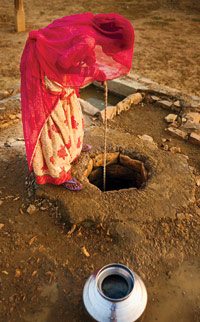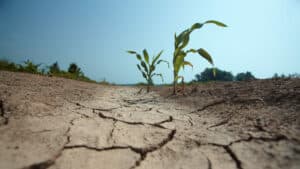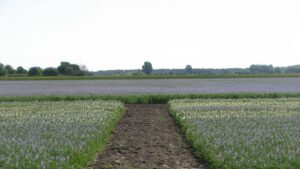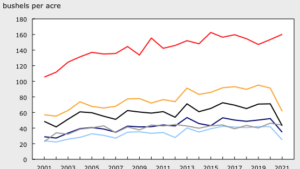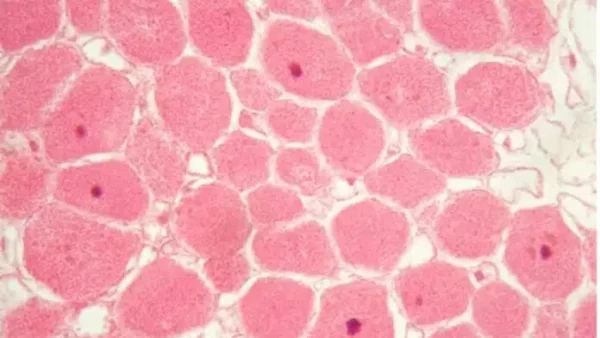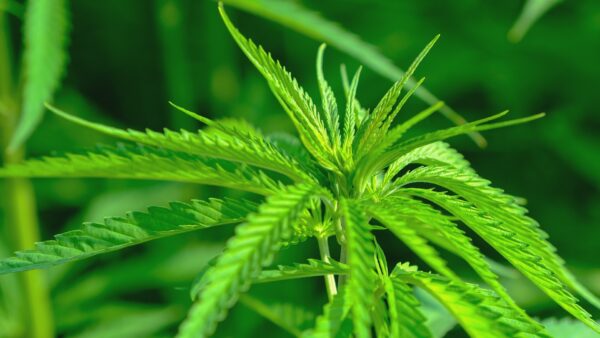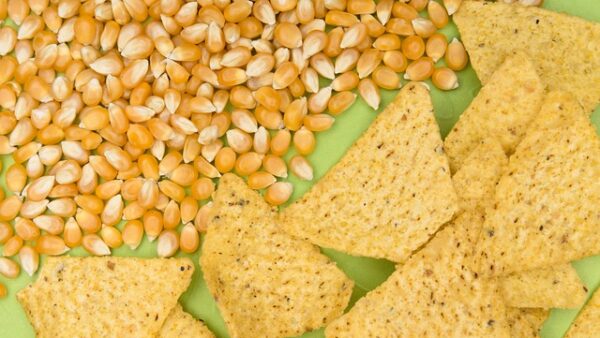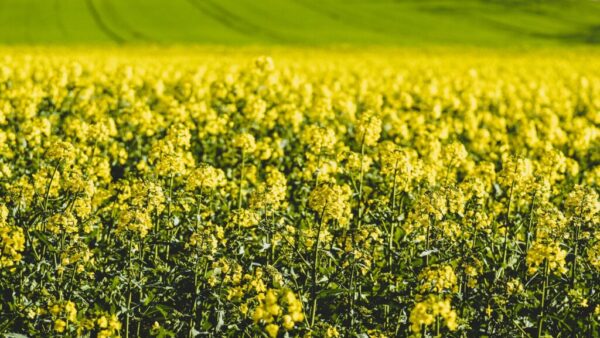Closing the Water Gap in Agriculture
Droughts are becoming more commonplace and severe in food producing areas around the world. That’s prompting the agricultural industry to develop technologies and management practices that will help improve crop yields under the kind of water-limited conditions that many experts predict are going to become increasingly prevalent.
In its 2009 report, “Charting Our Water Future”, Water Resources Group 2030 states: “In just 20 years … the demand for water will be 40 per cent higher than it is today, and more than 50 per cent higher in the most rapidly developing countries. Historic rates of supply expansion and efficiency improvement will close only a fraction of this gap.”
Few industries are more acutely aware of the need to stretch water resources than the agriculture industry, which uses about 70 per cent of the world’s fresh water supply. According to the FAO, it takes 1,500 liters of water to produce one kilo of wheat and 15,000 liters to produce one kilo of beef.
Solutions are Coming
Agricultural production in many countries is already suffering from the effects of reduced water supplies. The United Kingdom’s wheat harvest is expected to drop by at least 15 per cent this year, because of drought conditions in early 2011. In Australia, which is already the world’s driest continent, agriculture is threatened by increased salinity in water.
Agriculture, however, also has the means to become a big part of the solution towards closing the future “water gap,” according to Water Sources Group 2030. According to the report, “in all of the case studies, agricultural water productivity measures contribute towards closing the water gap, increasing “crop per drop” through a mix of improved efficiency of water application and the net water gains through crop yield enhancement.”
Perhaps such optimism explains why the agriculture industry has been so proactive in trying to find solutions to the complex issue of making plants more water efficient and tolerant to the stresses that drought can confer on them.
“It is critically important to us to be involved in producing more with less land and better utilizing inputs in sustainable agricultural systems,” says Dirk Benson, head of corn trait project management for Syngenta’s Research and Development. “Whether the inputs are genetics, traits, chemistries, water or fertilizers, it comes down to understanding how to maximize the toolkit that a farmer has to get stable high yields in the environment that he is farming in.”
Syngenta has developed a technology through its native breeding program that gives higher yields in water-limited environments without sacrificing yield in high yielding environments. Under the brand name Agrisure Artesian, it introduced three corn hybrids in 2011 which will be commercially available to growers this year. Six more are undergoing wide area testing in 2012 and should be commercially available next spring.
“We see these corn hybrids as tools farmers can use to stabilize yields over time,” says Wayne Fithian, Syngenta’s technical corn portfolio product lead. “Our Agrisure Artesian product line maximizes yield when it rains and increases yield when it doesn’t. These products can reduce the amount of drought-related yield dips that happen when drought occurs.”
Syngenta is looking to apply and globalize the same technology in other crops such as wheat and sunflowers. It is currently working on project collaborations in Asia, funded by the Syngenta Foundation for Sustainable Agriculture, to bring this technology to low-yielding, marginal areas of Asia. “We are providing these farmers with improved genetics that will improve their yields in water-limited environments,” says Dirk.
Advances in Technology Leading the Way
Genomics is one of the technologies that is playing a key role in the development of more drought-tolerant strains, and has caused a shift in thinking and research methodologies over the last decade.
“Over the last ten years of research we have started to apply our molecular capability using genomics technology to sequence the genomes of crops,” says Mark Cooper, senior research fellow at Pioneer Hi-Bred. “That has helped us to identify the native variations that exist at the genetic level and better understand some of the complexities we are dealing with. That has then helped us to investigate ways of trying to find novel diversity outside of the crop. That knowledge has started to enable some of the leading research organizations that have been doing this type of work to build some product development strategies that really bring those capabilities together.”
Pioneer recently commercialized a suite of hybrid corn products under its Optimum AQUAmax brand that offer growers an advantage in water-limited environments, while maintaining high yields under more optimal conditions. Initially launched in the western part of the U.S. Corn Belt, the company is preparing to also enter the European and other global markets with the same technology.
Drought tolerance and water use efficiency are complex innovations, involving genetics, but also other technologies. “When we talk about our genetic capability we are talking about our ability to bring in genes from other species through genetic modification,” says Dirk. “But we are also looking at our understanding of chemistry in these cropping systems. It’s about weed, disease and insect control; it’s about yielding more with less water and the timing of water applications. It’s a very complex set of interactions that you are trying to manage.
Working Together
Such complexity means that global collaboration is needed to bring together the best research and expertise in solving drought-related issues for crop production. There are many examples of private and public sector organizations, research facilities, governments, NGOs and agri-business companies working together on drought-related projects worldwide.
The DROPS Consortium, initiated by the Institut National de la Recherché Agronomique of France, brings together 15 leading researchers and their respective organizations to develop solutions for drought in important crops including maize. Both Syngenta and Pioneer Hi-Bred, which has been involved in drought-tolerant research since 1957, are members of the European-led consortium.
An important part of the expertise that Pioneer Hi-Bred is bringing to the DROPS project are the company’s proprietary and advanced modeling capabilities for maize, which are helping to streamline the research process. “The challenge is great, and if we tried to do everything just empirically and test every possible genotype in every environment it would be an impossible task,” says Cooper.
“We now have some predictive modeling capabilities that are helping us to focus and front-load into our experiments genetics and management practices that we predict are going to have a much higher likelihood of success. By making these technologies accessible to the teams in the DROPS project we are years ahead of where we would have been if we were starting without those tools being available to the DROPS project team and the broader scientific community,” he adds.
Water Efficient Maize for Africa is another project that illustrates the effectiveness of global public/private collaboration. Initiated in 2008, WEMA is an ongoing project led by the African Agricultural Technology Foundation. Other partners include national agricultural research programs in Kenya, Mozambique, South Africa, Tanzania and Uganda, the International Maize and Wheat Improvement Center, and Monsanto.
Each partner in the project brings something unique to the table. Monsanto’s contributions to the WEMA project include the provision of maize germplasm to enable the breeding efforts, the offer of technical expertise to develop and deploy locally adapted maize hybrids, and the donation of its commercial drought-tolerant trait royalty-free.
Stewardship Matters
Technologies by themselves aren’t as effective without the appropriate management in place, so another part of the huge drought-tolerance puzzle involves stewardship practices and examination of how cropping systems are managed both during growing seasons and between them.
Syngenta has stated that it believes agricultural policies will have to make water efficiency a priority in order to manage water scarcity, and growers will need incentives and improved infrastructure to implement better water management. According to the Syngenta website, “Up to 40 per cent of the water used by some farmers is lost due to inefficient practices such as field flooding. We need to broaden our focus to include land productivity and water productivity. We have to get the highest yield out of every drop. Drought-tolerant seeds can help produce reliable yields even when water is scarce.”
Pioneer Hi-Bred is another company that recognizes the importance of management practices. “Pioneer certainly works with growers worldwide to emphasize the importance of putting the right product on the right acre,” says Cooper. “We know that some hybrids are going to be better suited to different management conditions, each of which utilize the water resources that are available differently, and water management is a critical part of that. An obvious example is that if you manipulate the plant population in a field this is going to impact the rate at which water is extracted from any particular acre by that crop stand.”
Looking Ahead
These global efforts reflect the true global nature of drought and other water-related issues. The factors that affect the availability and quality of water worldwide, such as climate change, population growth and socio-political factors, are as complex as the hydrological cycle itself.
The United Nations says a warming climate will be responsible for declining rainfall in some regions, glacial melt in others, rising sea levels and more natural, weather-related disasters. The burgeoning cities of Houston and Sydney are already using more water than is replenished, and with the world population predicted to reach 9 billion people by 2050, using water more efficiently is a necessity, as is sustaining the agricultural systems that will feed them.
Angela Lovell


